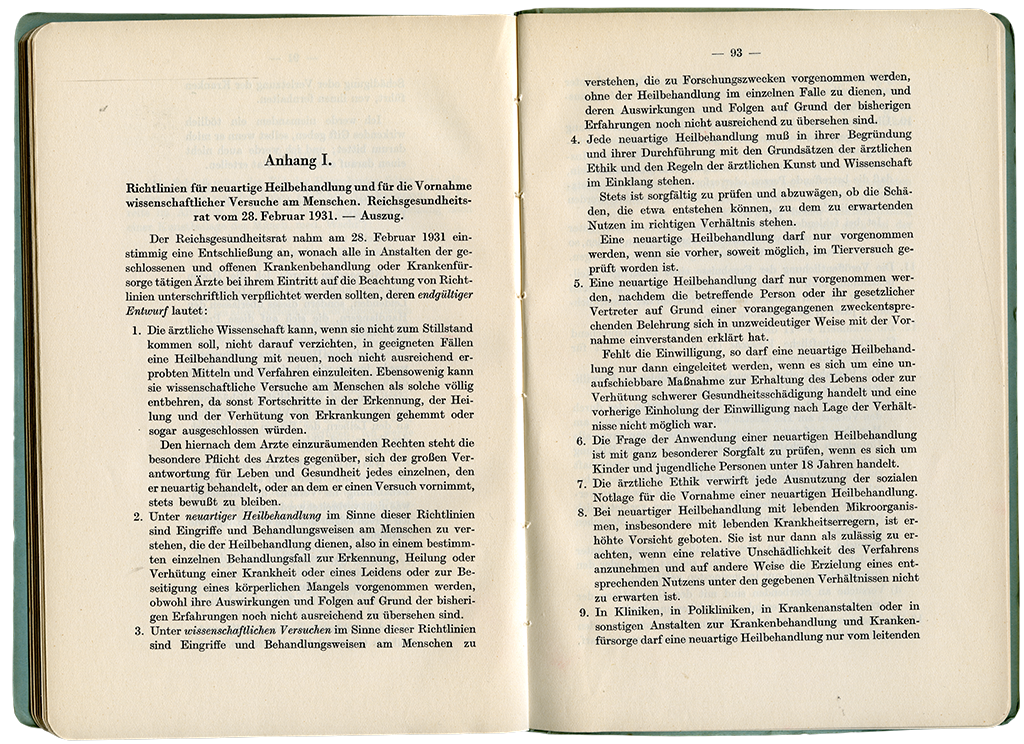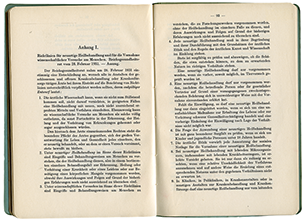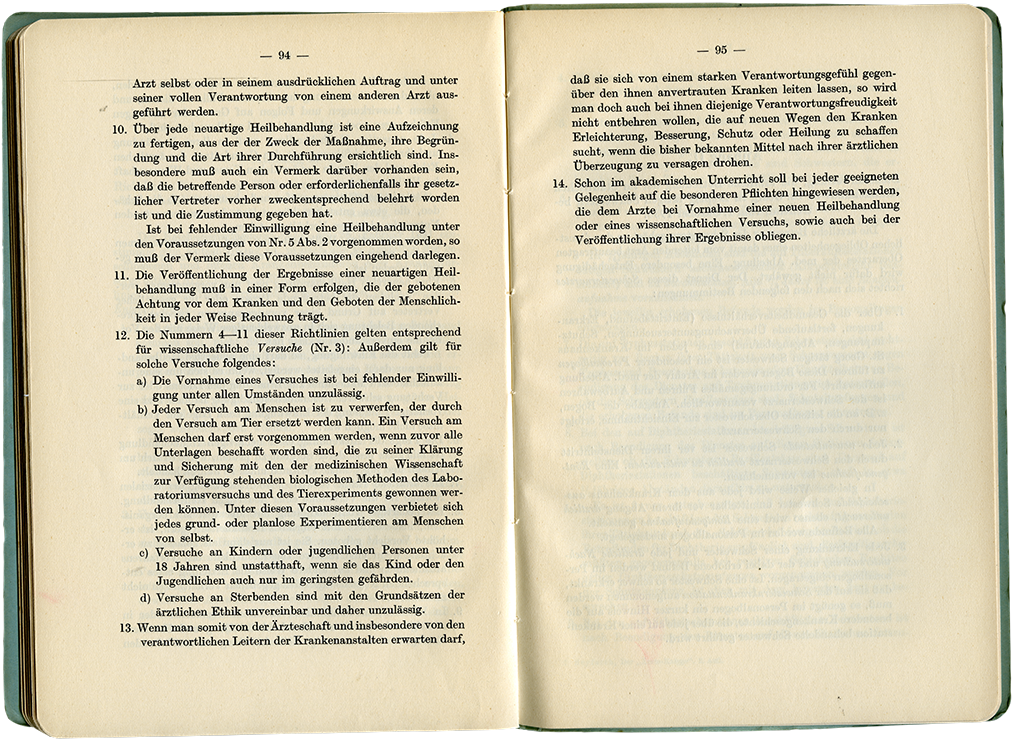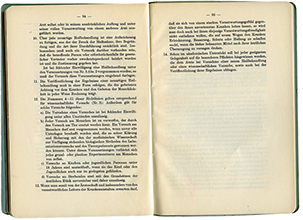

The Nuremberg Trials
The Nuremberg Doctors’ Trial, which was held from 9 December 1946 to 20 August 1947, tried a total of 23 people, among them one woman. Two of the accused were connected to the German Radiological Society: Dr. Kurt Blome, who had served as Deputy Reich Health Leader and Deputy Director of the Reich Physicians’ Chamber, had become an honorary member of the German Radiological Society in 1940. The criminal prosecution authorities accused him of complicity and abetting human experiments, the abuse and murder of tens of thousands of Polish citizens ostensibly suffering from tuberculosis, and the implementation of the “euthanasia” program.
The highly qualified radiologist and aviation medicine expert Dr. Georg August Weltz, however, was a full member of the German Radiological Society; he had served on the Advisory Board since 1937 and was president of the 29th German Radiological Congress in 1938, which was held in Munich, where he worked and lived for many years. Weltz was involved, via his subordinate SS-Hauptsturmführer Dr. Sigmund Rascher, in the often deadly experiments on hypothermia and in pressure chambers that were conducted in the Dachau concentration camp in 1941 and 1942. Both defendants were acquitted.
In the rear row, from left to right, the photo shows Dr. Hermann Becker-Freyseng, Dr. Georg August Weltz, Dr. Konrad Schäfer, Dr. Waldemar Hoven, Dr. Wilhelm Beiglböck, and Dr. Adolf Pokorny (half-visible). The defendants in the front row, from left to right, are Dr. Karl Genzken, Prof. Dr. Karl Gebhardt, Dr. Kurt Blome, Prof. Dr. Joachim Mrugowsky, and Dr. jur. Rudolf Brandt.
The Nuremberg Doctors’ Trial served as the point of departure for a new awareness regarding basic ethical values meant to guide medical treatment. The “Nuremberg Code” was drafted in 1947 as a reaction to the medical crimes uncovered by the trial, and it laid out the conditions for ethically permissible human experimentation. Its core point is the requirement of “informed consent,” which is an indispensable prerequisite for conducting a medical experiment on a human being.
Many people often overlook the fact that the “Guidelines on new treatments and conducting scientific experiments on human beings,” promulgated by the Reich Health Council of the Weimar Republic on 28 February 1931, proposed a highly differentiated codification of ethical principles. This regulation was not annulled throughout the entire National Socialist period and was integrated into a total of four editions of the popular “Physician’s Etiquette Manual: On dealing with patients and on obligations, skill, and service for hospital physicians,” which was published until 1942.
Detail of the dock at the Nuremberg Doctors’ Trial: Kurt Blome, honorary DRG member, and Georg August Weltz, DRG member and president of the First Greater German Radiological Congress in 1938 (Copyright IPPNW/Helmut Sörgel, Nuremberg. Foto: Ray D'Addario)
Guidelines on new treatments and conducting scientific experiments on human beings. Reich Health Council, dated 28 February 1931 (in: Seyfarth, Carly:
Der „Ärzte- Knigge“. Über den Umgang mit Kranken und über Pflichten, Kunst und Dienst der Krankenhausärzte (2nd improved and expanded edition),
Leipzig 1935 (Thieme). Appendix I, pp. 92-95)
Menu
Deutsche Röntgengesellschaft e.V. © 2018
| Impressum | Datenschutz



